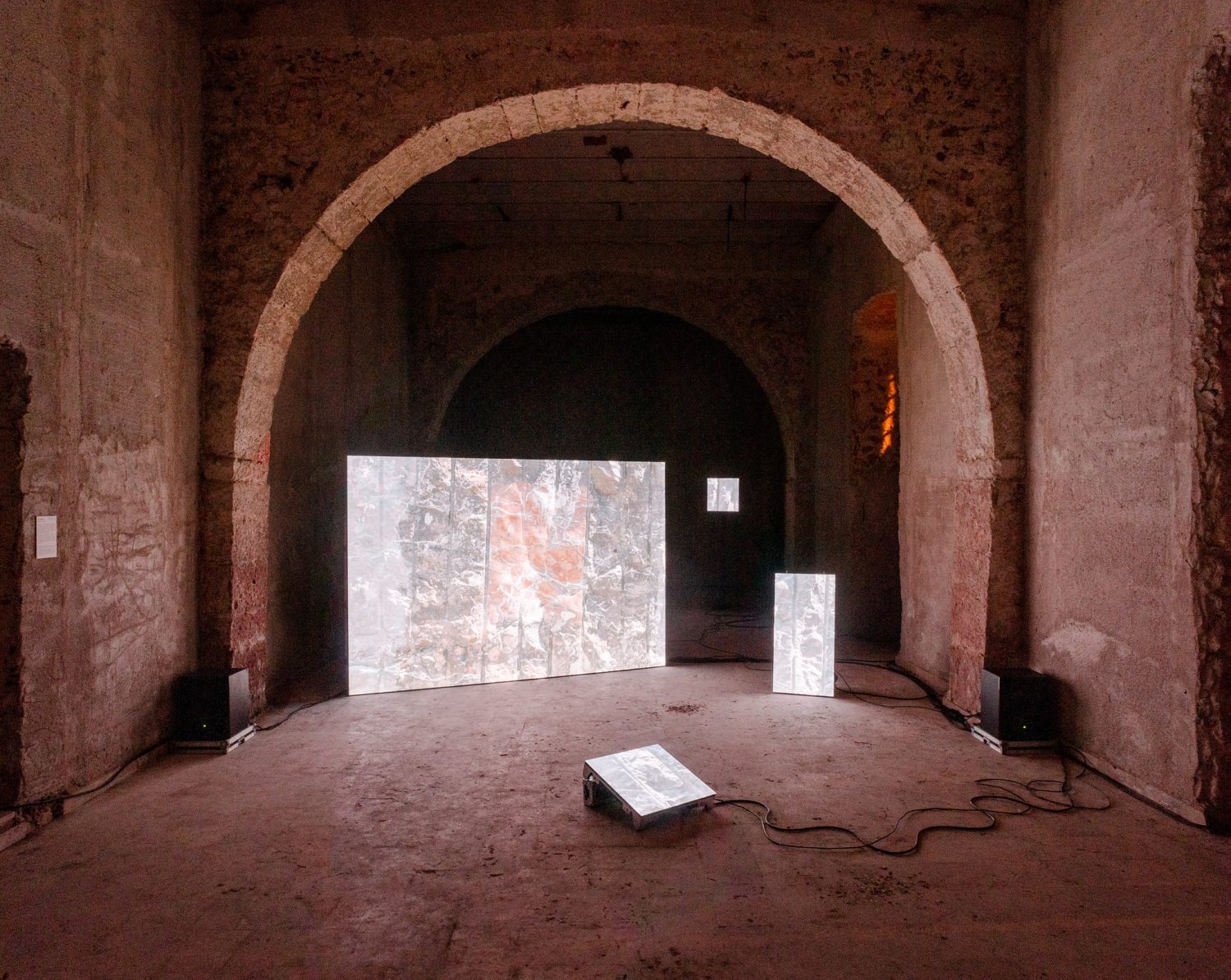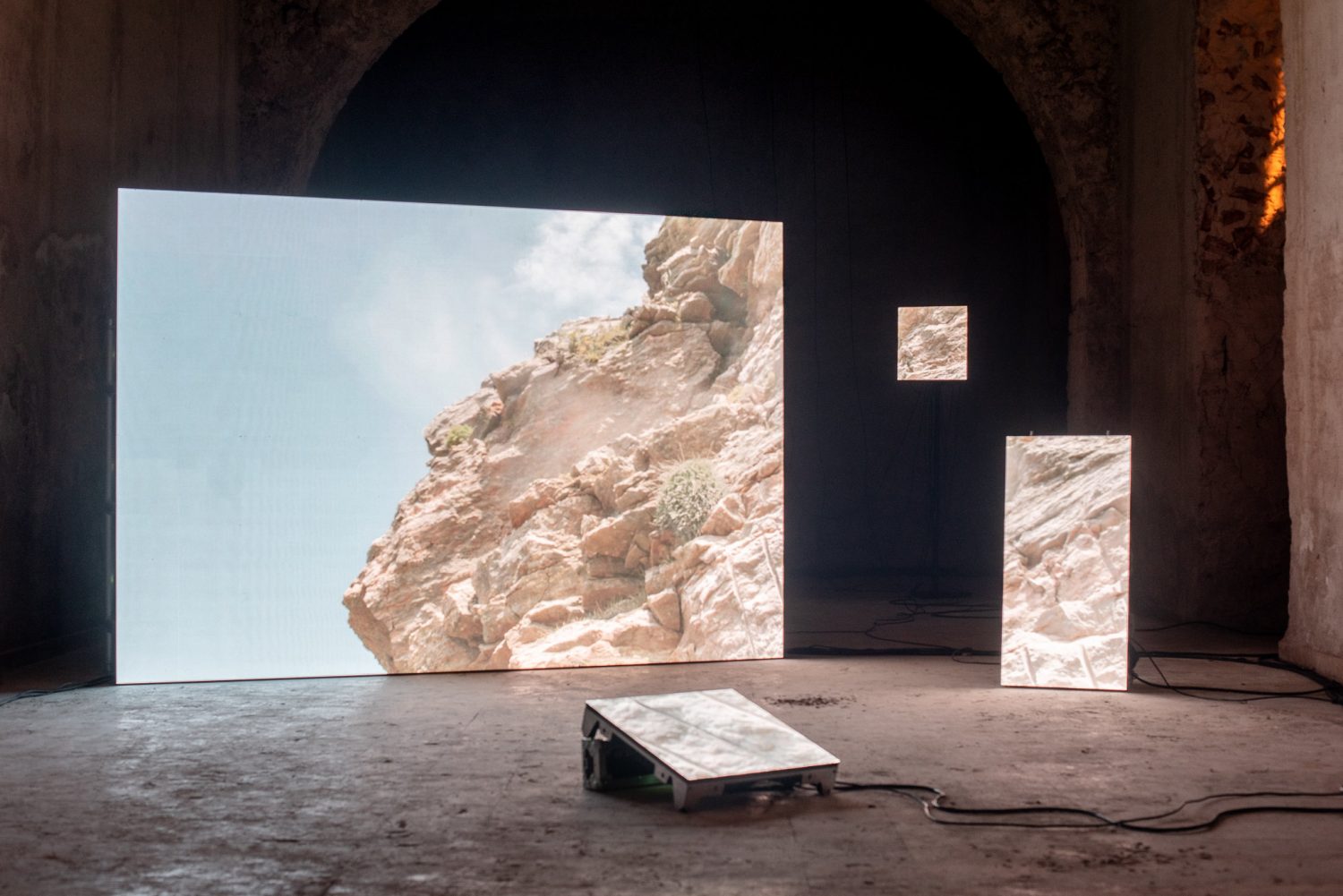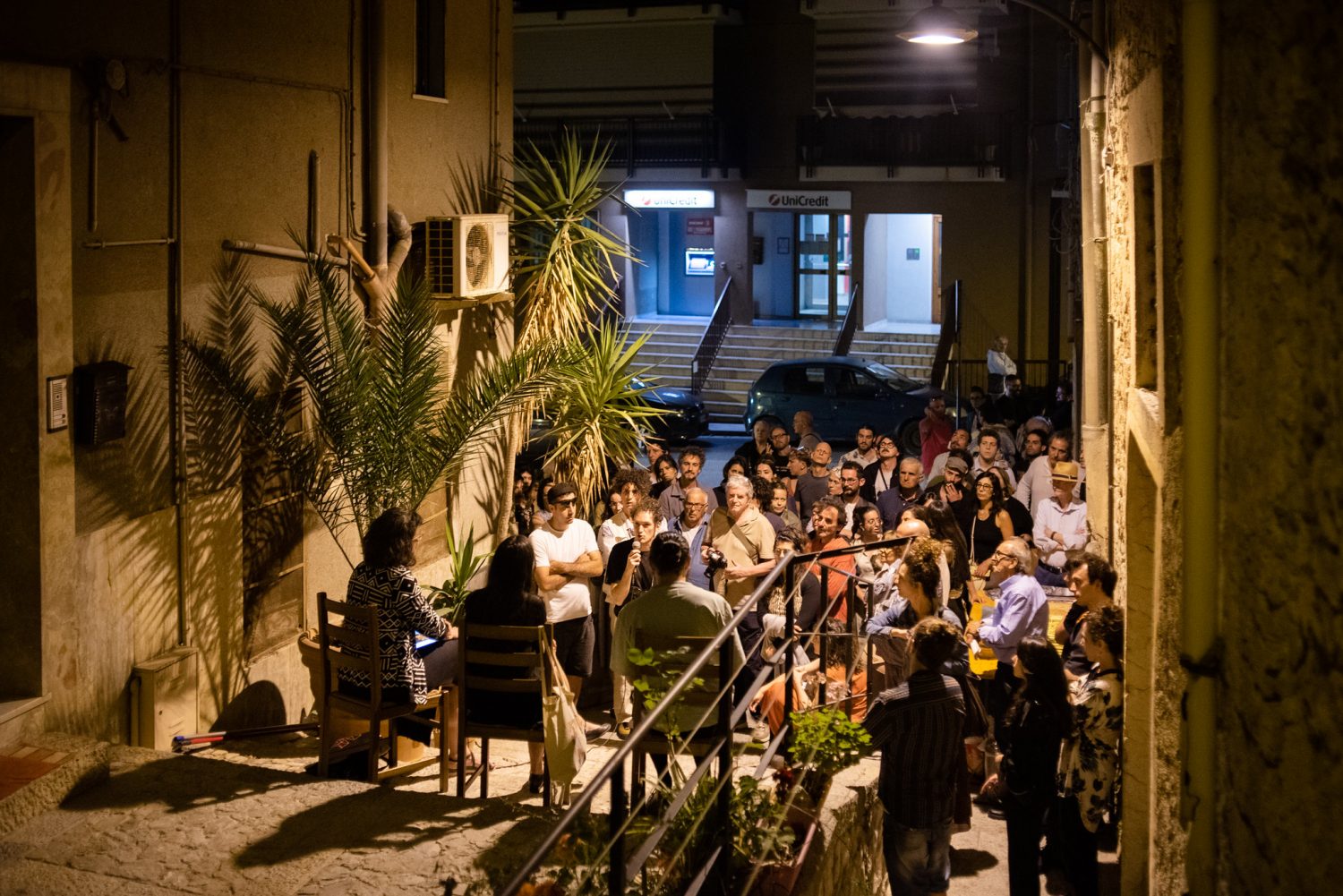An introduction to Kumeta, an antifascist video installation about a short-lived peasant republic in Italy, programmed for the Transeuropa Festival.
In the winter of 1944, uprisings broke out in various Sicilian villages against the mismanagement of agricultural crops by an alliance of big landowners and fascist elites, who remained in the government and left the population starving. On 31 December in Piana Degli Albanesi, a town with a strong and unique cultural and linguistic identity founded by Arbëreshë people half a century before, a group of rebels led by Giacomo Petrotta proclaimed the Repubblica Popolare Contadina.
Almost 80 years later, the Sicilian visual artist Genny Petrotta, grand-niece of the leader at the time, revisited the long-silenced historical episode of her hometown, searching for traces of what happened during the 50 days of the autonomous republic, which existed until it was crushed by the police. The video installation Kumeta is the first act of the project MËMA MË FAL (Mamma Perdonami).
Trigger warning: this article contains graphic descriptions of torture.

Credit: Roberto Boccaccino

“Our truth was followed by beatings and torture”
On a cold and rainy night on 19-20 February 1945, a massive mob of about 2,000 men set out to surround a town ravaged by war and famine. 120 elderly and young people were arrested, including Giacomo Petrotta. He was tortured for 10 days, placed in agony in a lying position in a box measuring 1 metre by 80 – a so-called “torture box”.
In an artistic intervention about torture and state repression, Genny Petrotta invited the two sculptors, Francesco Albano and Simone Zanaglia, to polish and smooth a rectangular portion of the rock facade of the marble quarry that overlooks the village. The polished surface has the same dimensions as the box where prisoners were kept during torture after having been arrested.The red marbles evoke human flesh, and the smoothing becomes a gesture of caressing a sore body. The north-facing wall of “Mount Kumeta” where the intervention takes place, is also the scene of a massacre on May 1st, 1947, in Portella della Ginestra.The sculptural intervention of smoothing and polishing has been filmed for the Kumeta project.
The following text is a testimony of Giacomo Petrotta.
In total, the arrests rose to about 120 elderly and young people. In the afternoon, a room on the second floor was used for interrogation and torture. All who were crammed into this room were subjected to the first interrogations. They wanted to know at any cost where our machine guns, hand grenades, and especially Molotov cocktails were hidden, which of us had destroyed the telegraph poles, and anything else their imaginations suggested. But what weapons could we have if not a few pistols, which they seized from us on arrest? Our truth was followed by beatings and torture. The traditional “cassette” appeared, with which it is difficult to resist saying nothing, extracting false stories that never happened from the mouths of the tortured. With this torture, the interrogated person was placed supine on a box measuring one metre by eighty metres; the hands and feet left dangling were tied tightly with thin metal ropes to the respective sides of the box.
The unfortunate person was sprinkled with water and salt and whipped with an oxen’s backbone and high-tension steel wires. Depending on the treatments that were used, the position of the unfortunate man was changed. An improvised team of the most evil and sadistic carabinieri began the torture. At first, I was subjected to the same torture as the others, but then when the others were left they continued with the most evil and brutal torture on me.
As I have already said, each one of us who happened to be tied up in the box was sprinkled with salt and water, so that the blows would be more scorching and at the same time the marks would not be visible… and then whipped with the ox-barrel and steel wire. The room was transformed into a complete quagmire, for the shrieking screams seemed like infernal bedlam. In the room we found ourselves in a group of 20 and 30, young and old, all naked and giving each other endless beatings.
They insisted on knowing where the others who had had a chance to escape were hiding and where those weapons, and ammunition, suggested by Constable Bevacqua were; they insisted above all that we should tell them the name of the person who was in charge of ringing the bells to sound the alarm in case the police came.
Those who tasted the blows the first time were never touched again, but I had a different fate. For another 10 days they continued their ravages on my body, more and more systematic and methodical, so that they were more provoking and painful, but to me they seemed milder because my body was already reduced to a rag of cloth.
After long days, the torture finally ceased. Taking me like a rag, they threw me into the security cell. I was swollen from the lashings to look like a pachyderm. Infections were beginning to set in, part of my fingernails had been torn out; my genitals were swollen and sore from the constant manipulation.
From ‘Testimonies from a Peasant Republic’, edited by Angela Lanza.

Genny Petrotta (1990) is an Italian artist who lives and works in Palermo. Her artistic practice, guided by poetry and through video installation, seeks the sublimation of a wide range of interests and influences, from anthropological and philosophical to historical. Since 2016 she has been part of Il Pavone, an artistic collective with which she has exhibited in festivals and exhibition spaces including Manifesta12 Collateral, Spazio Y Rome, Adiacenze Bologna, Festival Effetto48, Cassata Drone Palermo, Festival Main off Palermo. Since 2017 he has been working with the artistic duo MASBEDO as assistant director and also covering other roles. In 2022 she directed the production of the video installation “U scantu” by Elisa Giardina Papa presented at the 59th Venice Biennale and coordinated the production of “Alkestys” by Beatrice Gibson and Nick Gordon presented at the British Art Show.
KUMETA and MËMA MË FAL is produced by Fondazione Studio Rizoma and Genìa Lab Art.